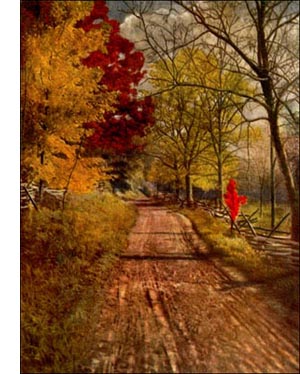Dwarf Juniper Tree
 Dwarf Juniper (Juniperus communis, Linn.)-Shrub of sprawling habit, or small tree 20 to 30 feet, with short trunk and irregular, open head of erect branches. Bark loosely scaly, thin, reddish brown. Wood hard, fine textured, light brown, durable in soil. Buds loosely scaly, small, pointed. Leaves in threes, boat shaped, lined with a white bloom on the concave (upper) side, spiny, spreading, dark green, shiny below; ; to 2 inch long; in winter, bronze green; persistent for many years. Flowers monoecious, axillary, in cone-like aments. Fruits ripe third autumn; berries bright blue with pale bloom, flesh mealy, soft; seeds 1 to 3. Preferred habitat, dry limestone hills; waste land. Distribution, Greenland to Alaska; south to Pennsylvania and Nebraska, in Rocky Mountains as far south as Texas, New Mexico and Arizona; Alaska to northern California. Uses: Planted for hedges, windbreaks and as a cover for waste land on seashore. Berries used to flavour gin.
Dwarf Juniper (Juniperus communis, Linn.)-Shrub of sprawling habit, or small tree 20 to 30 feet, with short trunk and irregular, open head of erect branches. Bark loosely scaly, thin, reddish brown. Wood hard, fine textured, light brown, durable in soil. Buds loosely scaly, small, pointed. Leaves in threes, boat shaped, lined with a white bloom on the concave (upper) side, spiny, spreading, dark green, shiny below; ; to 2 inch long; in winter, bronze green; persistent for many years. Flowers monoecious, axillary, in cone-like aments. Fruits ripe third autumn; berries bright blue with pale bloom, flesh mealy, soft; seeds 1 to 3. Preferred habitat, dry limestone hills; waste land. Distribution, Greenland to Alaska; south to Pennsylvania and Nebraska, in Rocky Mountains as far south as Texas, New Mexico and Arizona; Alaska to northern California. Uses: Planted for hedges, windbreaks and as a cover for waste land on seashore. Berries used to flavour gin.This indefatigable little tree colonist has not only settled in most of the colder parts of this country, but it is found in the Eastern Hemisphere from the broad stretches of the North even to the mountains of southern Europe, northern Africa and the Himalayas. In America it assumes a definite tree habit only in southern Illinois. It would seem as if the limestone of these uplands gave the procumbent, incapable sprawler backbone enough to stand up and take its place among trees. In another particular this species lacks energy; it requires three years to ripen a crop of berries.
Out of J. communis has sprung a race of low junipers-important horticultural varieties, including graceful weeping forms, compact globose ones, some spire-like and some with golden foliage. The Irish juniper, one of the most popular varieties, has a tapering habit, very narrow, like a miniature Lombardy poplar. J. communis is the only species whose leaves are spreading throughout. On the remaining ten native species the leaves are minute and closely appressed to the stem, except a few whose new shoots imitate the dwarf juniper. In Europe, much more than in America, the berries are gathered and consumed in the making of gin. From time immemorial the flavour of the juniper berry has been the sine qua non to quality in this beverage.